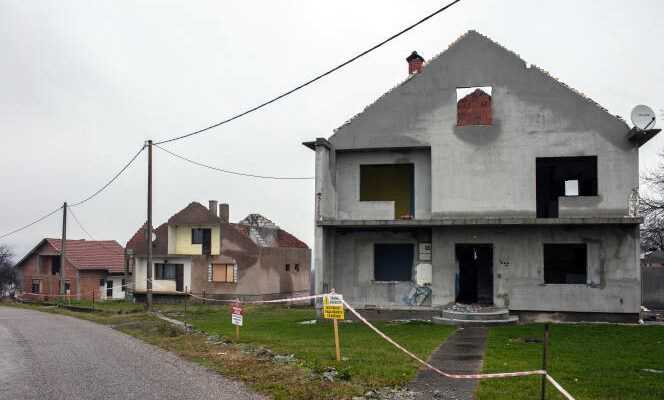It is as if the inhabitants had all left suddenly, but still taking care to take their tiles and their framework with them. With its hollow, roofless and windowless houses, surrounded by red and white ribbon and messages from Rio Tinto warning that it is “Forbidden to enter”, Gornje Nedeljice is a strange ghost village, barely animated by the surveillance patrols of the Anglo-Australian mining group. By 2026, Rio Tinto dreams of building on these lost lands in southwestern Serbia, on the Bosnian border, the largest lithium mine in Europe.
On its website, Rio Tinto assures that its “Jadar mine”, from the name of the local river, will be able to extract “58,000 tonnes of lithium carbonate per year” since “jadarite”, an ore that the mining giant discovered in this valley in 2004. Enough “To supply more than a million electric cars” to the whole European automotive industry and to make Serbia “A hub for green energy” of a continent which must for the moment operate its transition to electricity thanks to lithium coming from Australia or Latin America. At least if the multinational manages to overcome resistance never seen so far for a mining project in Serbia.
“Rio Tinto will never open a mine here”, proclaims Marjana Petkovic, from her living room installed a few hundred meters from the ghost village. This 47-year-old teacher has become in a few months one of the most visible faces of the protest against the project. Associated with environmental NGOs across the country and supported by the opposition, their “Don’t Give Jadar” movement has been successful in organizing protests in all major cities. Saturday, December 11, they were still several thousand even if the mobilization showed signs of running out of steam after Serbian President Aleksandar Vucic promised to have two laws reviewed accused of favoring Rio Tinto.
“I’m afraid for the water tables, that nothing can grow here. Rio Tinto may employ a thousand people, but thousands more will lose their jobs in agriculture ”, estimates the activist who watches for every dead animal in Jadar by suspecting the first exploratory drilling of the mining group, marked by blue piezometers planted in the fields. For now, it is difficult to know to what extent these fears are justified. Rio Tinto does not publish any of its preliminary studies and the environmental impact study which will have to be approved by the Serbian authorities is still ongoing.
You have 66.64% of this article to read. The rest is for subscribers only.
